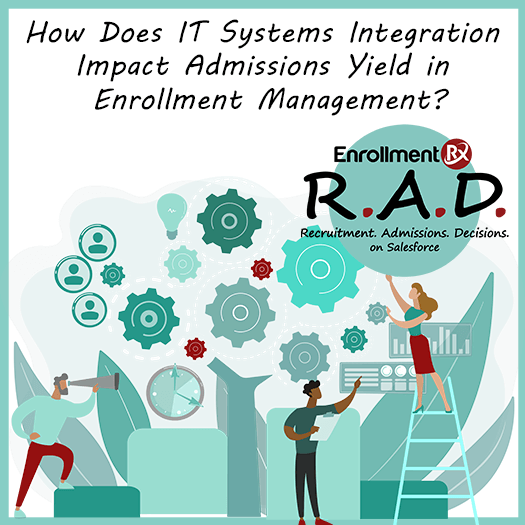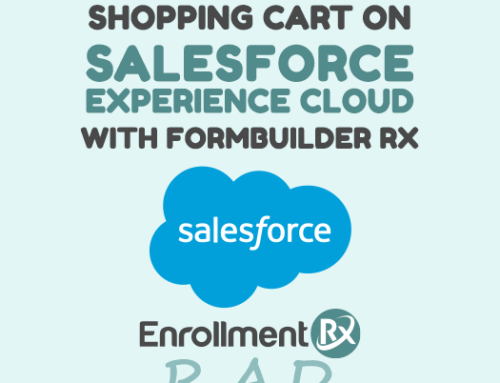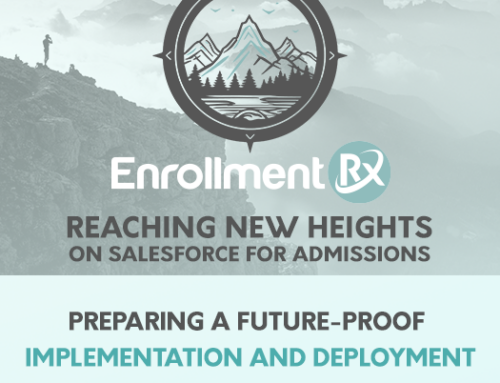Can IT systems integration impact admissions yield in enrollment management?
A widespread problem among educational institutions is the lack of system integration between their recruitment and admissions crm for higher education and other enterprise software systems. This is an all too common tale in crm for higher education. It is a story about a school that uses multiple software tools to manage recruitment and admissions with little to no integration between systems.
System #1 – Recruitment
Most universities and colleges employ teams of recruiters, each focused on collecting as many prospective students in their respective territories as possible. Pre-Covid, this was done through various methods such as high school visits, college fairs, open houses, and more. Ideally, each recruiter would enter all prospective student data into a single crm for higher education. However, many institutions also maintain multiple spreadsheets and rouge systems to collect such data for individual recruiters. Additionally, the school may collect inquiries via their website and other marketing landing forms that feed into separate systems.
Unfortunately, any data collected in these “recruitment systems” stops there and is never shared with any other system thereafter. This causes significant problems in determining the effectiveness of recruitment activities because many schools utilize a separate system to collect prospect applications. Without the appropriate crm for higher education and integration between systems, any application that is subsequently submitted into a seperate “applications” database contains no history or correlation between recruitment activities that may have driven that prospective student to apply.
Symptoms of this condition include:
- Not knowing how effective recruitment activities are in generating applications and enrolled students
- Difficulty reporting on lead sources of applications
- Various duplicate records being created
- Admissions team using the student information system (SIS) to manage admissions and applications, which only receives data from applicants that have fully completed the application
- Inability to see abandoned applications, which often go ignored because admissions teams are unaware that they even exist
- Multiple systems being used to manage enrollment
System #2 – Application
Oftentimes, the application that prospective students need to submit is powered by a separate software system that collects the necessary data from each applicant in a siloed system. Depending on the functionality that the system provides and the integration strategy deployed with the school’s SIS, admissions teams are often unaware of incomplete applications and are unable to take action on them. In many cases, this is because the admissions staff are using the SIS to manage applications instead of using a crm for higher education. Using an SIS to manage this does not give them the ability to view applications that were started and abandoned. Again, there is often nothing attached to application records regarding the lead source or how each applicant actually came to the school.
Symptoms of this condition include:
- Inability to see incomplete and abandoned applications
- Lack of reporting on the lead source of applications
- Too many duplicate records being created in our system.
- Abandoned applications often go ignored because our admissions staff are unaware that they even exist.
System #3 – Student Information System
All around the world, schools are still using their SIS to collect prospective student applications and manage them through enrollment. In this approach, schools may have one or multiple sources of applications that all need to be properly integrated with the SIS. These often include common or centralized applications, separate/3rd party application systems, etc. Admissions staff then log into the SIS to verify the completion of applications and make admissions decisions.
The primary problem with this approach is that SIS does not contain any crm for higher education capabilities. Admissions counselors do not have the tools to engage with applicants in a meaningful way from within the SIS, whether through email, SMS, etc. Additionally, the SIS often does not contain valuable recruitment information, such as marketing or event data, that could provide for insightful metrics and analytics.
Therefore, admissions staff are likely using multiple systems to manage and track applicants through the enrollment funnel. Schools that are storing different pieces of data within different systems often force their staff to track down information across multiple software tools.
Ideal State
Enrollment Rx recognizes that colleges and universities achieve success when they adopt a philosophy of managing recruitment, admissions, and decisions (RAD) activities in the crm for higher education, and only send admitted student data into the SIS. Recruitment and admissions staff should not need to access the SIS, as all RAD activities should occur in the CRM with the appropriate integration in place to provide bi-directional data flow between systems.
A consolidated CRM for higher education
Request a demo to learn more about Enrollment Rx and how our CRM solution for recruitment, admission, and decisions can help simplify the integration and management of your recruitment and admission efforts.




